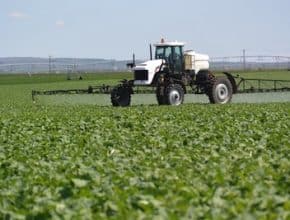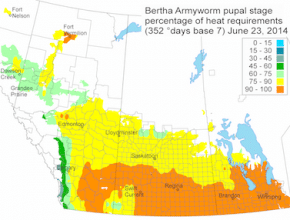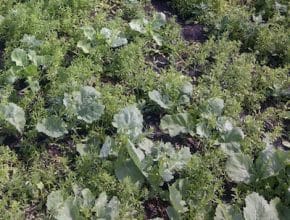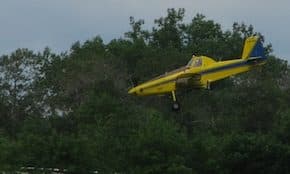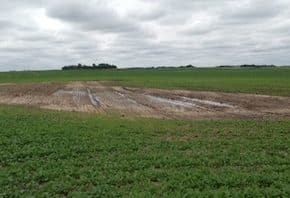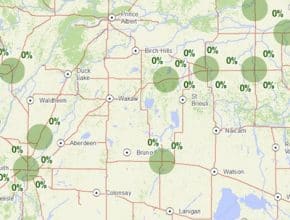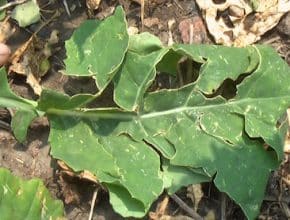Better late than never? Herbicide spray windows are closing but some fields still have major weed issues. Does the yield risk from herbicide damage outweigh the yield benefit from zapping that weed competition? Plane truth. You have to knock back those weeds, and now. Sometimes that means hiring a plane when field conditions are just too soggy for your ground…
June 25, 2014 - Issue 12
-
-
This map from Agriculture and Agri-Food Canada shows the regions where growing degree days (Base 7°C) have reached sufficient levels to trigger emergence of bertha armyworm adults from pupae. Adults will start emerging in orange areas. As adults emerge, they will start showing up in traps all across the Prairies. Keep tabs on cumulative adult counts over the next weeks…
-
What nutrient does this plant need? The quiz this week is about identifying and treated nutrient deficiencies…
-
Late weed control significantly increases the yield loss from weed competition, and it can also damage canola plants. However, the yield and economic risks from a later in-crop spray could make sense... —If growers use canola as a clean up crop for Group-1 resistant wild oats, narrow-leaved hawk’s beard, round-leaved mallow and other tough weeds, a second herbicide application may…
-
-
-
Scientists at Agriculture and Agri-Food Canada are testing an early warning system for sclerotinia in canola. The project is in its first year and involves 35 volunteers in Saskatchewan monitoring the emergence of apothecia in 67 sclerotia depots across the province. Each depot consists of 50 sclerotia (fungal resting bodies) buried at the soil surface. Sclerotia in the depots are…
-
We had a “follow up question” to last week's article "Hail damage: Economic loss depends on cro stage." The grower was asking about foliar nutrition after a hail storm. He had 2” of rain a week after a hailstorm and he feels that a foliar application could be worthwhile. The hail hit canola at the 5-6 leaf stage with a…
-
Want to see how a foliar nutrient application helps a hailed crop? Leave a check strip. Want to see whether a novel treatment provided a return on investment? Leave a check strip. Growers can use strip trials on their own farms to test how a particular practice or product performs in a local environment. This information can then be used…

